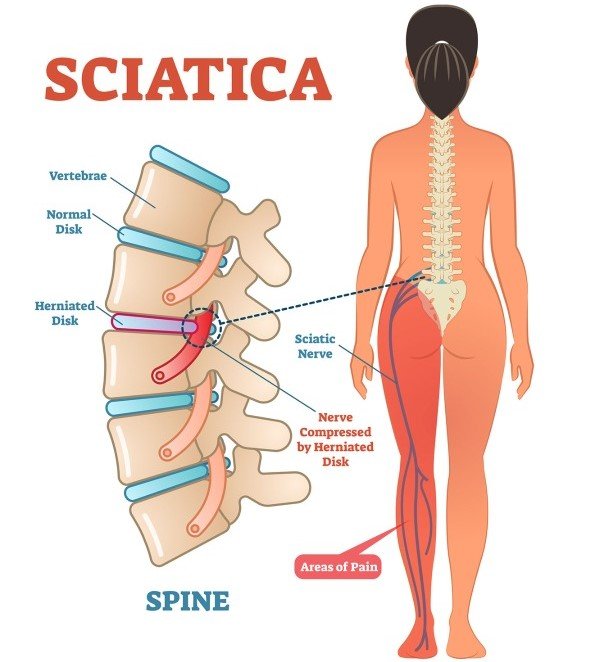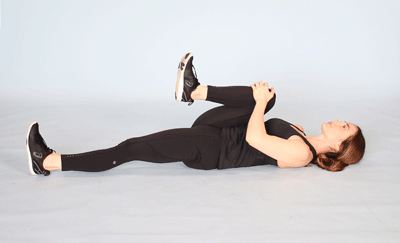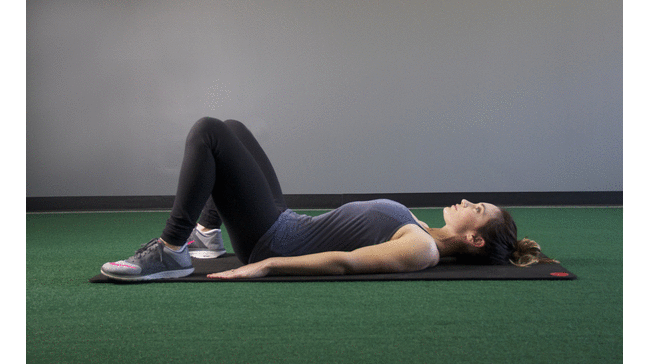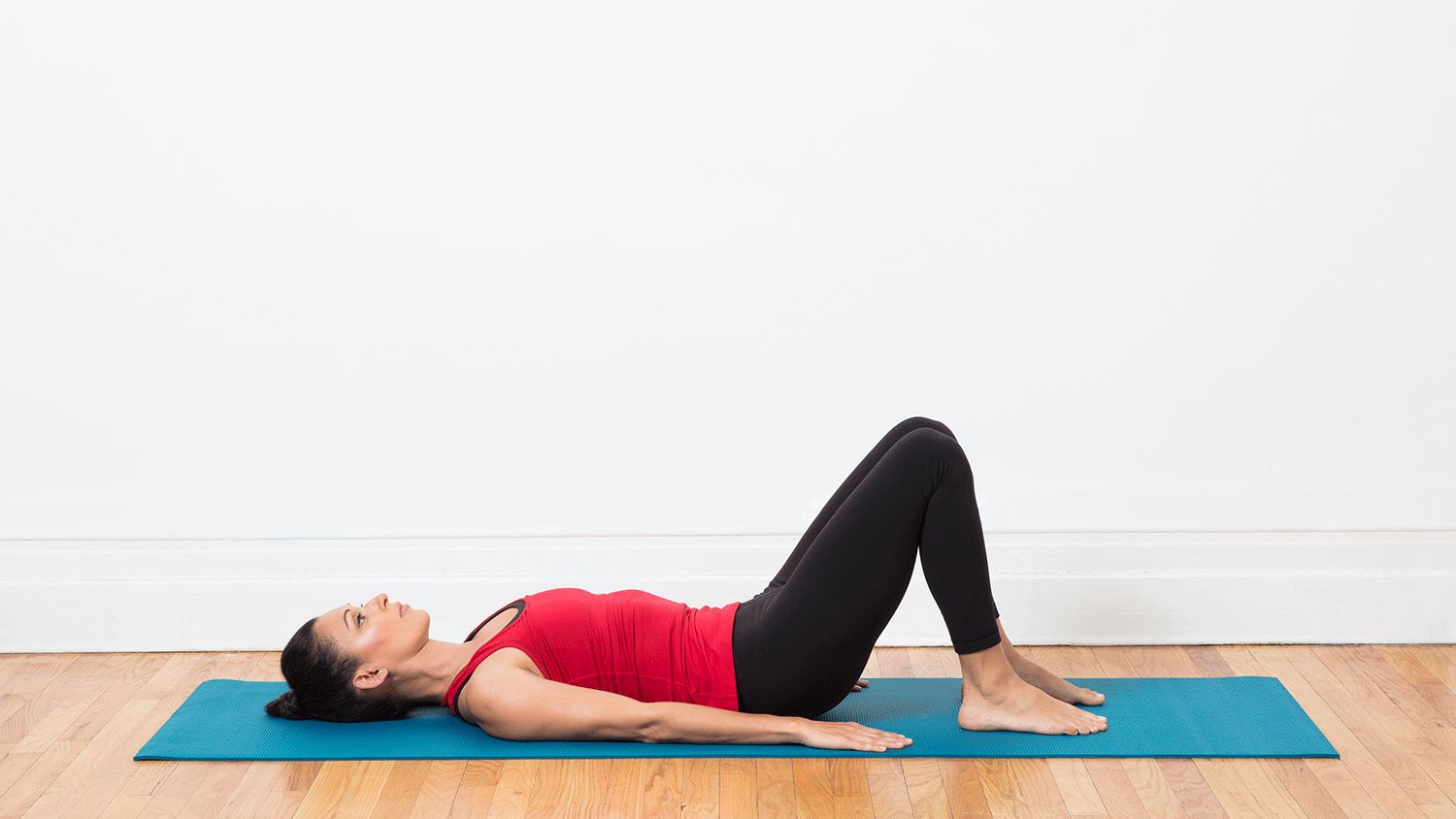Definition/Description
Sciatica refers to pain that radiates along the path of the sciatic nerve,
which branches from your lower back through your hips and buttocks and down each leg.
Typically, sciatica affects only one side of your body.
Sciatica most commonly occurs when a herniated disk, bone spur on the spine or
narrowing of the spine (spinal stenosis) compresses part of the nerve. This causes inflammation,
pain and often some numbness in the affected leg.

Symptoms/Characteristics
Sciatica is often characterized by one or more of the following features:
- Sciatica pain is typically felt like a constant burning sensation or a shooting pain starting in the lower back or buttock and radiating down the front or back of the thigh and leg and/or feet.
- Sciatica pain may be accompanied by numbness in the back of the leg.
- Sciatica typically affects one leg. The condition often results in a feeling of heaviness in the affected leg.
- Decreasing pulmonary function, major concern in progressive severe scoliosis
- Sideways body posture
Causes
Sciatica occurs when the sciatic nerve becomes pinched, usually by a herniated disk in your spine or by an overgrowth of bone (bone spur) on your vertebrae. More rarely, the nerve can be compressed by a tumor or damaged by a disease such as diabetes. Common causes of sciatica include:

Treatment
For mild scoliosis, you may not need treatment. Instead,
your doctor might watch you and take X-rays once in a while to see if
it's getting worse. Some children grow out of scoliosis.
If you or your child need treatment, your doctor might suggest:
Braces In kids who are still growing, wearing a brace around your torso can stop
the curve from getting worse. They're usually made of plastic. Many kids wear them 24 hours a day. You can't
see them under clothes, and they don’t stop you from doing everyday activities.
Spinal fusion surgery In this operation, your doctor puts pieces of bone
or a similar material between bones in your spine. They use hardware to hold
the bones in place until they grow together, or fuse. The surgery can lessen the
curve in your spine as well as keep it from getting worse.
Exercise Program for Sciatica
Before starting this, or any other, exercise program, check with your doctor to be sure that exercise is safe for your specific condition.
1. Knee to Chest
Purpose: To reduce pressure on the nerves in your low back and relieve back pain
How to perform a knee to chest stretch:
- Lie on your back.
- Bring your knee toward your chest.
- Using your hands, gently pull your leg in until you feel a comfortable stretch.
- Hold for 10 seconds, then place your leg to the floor.
- Repeat with the other leg and hold for 10 seconds.
- Repeat on each leg 3 to 5 times.
- Hold both legs together in the stretched positions for 10 seconds.
- Repeat with both legs 3 to 5 times.

2. Glute Bridges
Purpose: The glutes are a group of muscles in the buttocks. If they are tight, they can press on the sciatic nerve.
How to perform a Latissimus dorsi stretch:
- Lie on your back on the floor with knees bent. Feet should be about shoulder-width apart. Relax your arms at your sides.
- Pushing through the heels, lift your hips until your body forms a straight line from knees to shoulders.
- Hold the position for a few seconds.
- Slowly lower the hips to the floor. Then repeat.

3. Pelvic Tilt
Purpose: To strengthen your lower abdominal muscles and stretch your low back.
How to perform a pelvic tilt:
- Lie on your back with your feet flat on the floor.
- As you exhale, contract your abdominal muscles while you push your belly button toward the floor and flatten your low back.
- Using your hands, gently pull your leg in until you feel a comfortable stretch.
- Hold the position for 5 seconds.
- Repeat 10 times, holding the position for 5 seconds each time.
